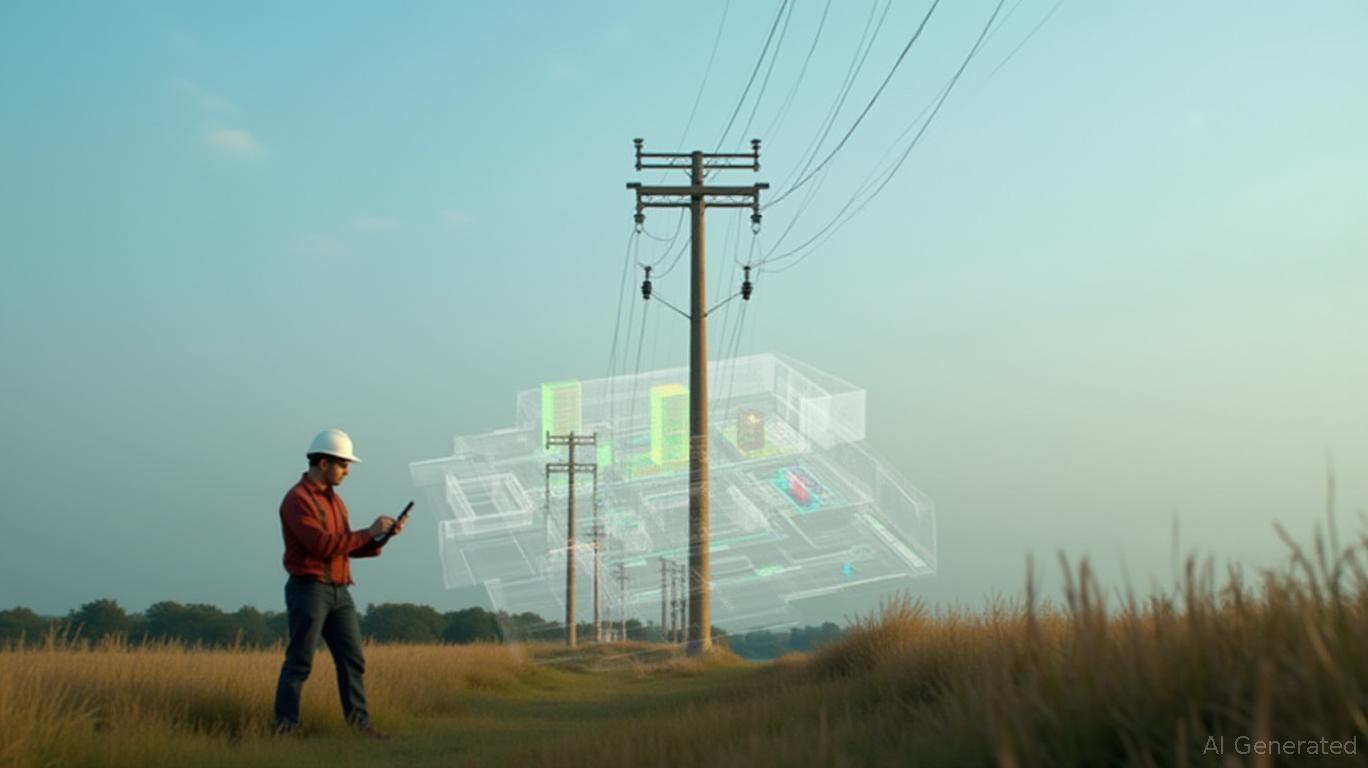Leidos' Automation Revolution: How Smart Tech is Transforming Utility ROI and Grid Resilience
The U.S. power grid, a labyrinth of 185 million poles and aging infrastructure, faces a crisis of cost, reliability, and compliance. Utilities must modernize to integrate renewables, meet NERC regulations, and avoid escalating operational risks—all while keeping pace with rising customer expectations. Enter Leidos, whose Skywire AI platform and digitization tools are redefining the economics of grid management. By automating labor-intensive tasks, reducing project timelines, and enhancing compliance, Leidos is enabling utilities to lower total cost of ownership (TCO) and boost operational resilience. For investors, this is a transformative opportunity: utilities adopting Leidos' solutions stand to outperform peers, while Leidos itself emerges as a critical enabler of the energy transition.

The Costly Grid Dilemma
Utilities are caught between a rock and a hard place. Aging infrastructure demands upgrades, but manual processes—like relay setting adjustments or compliance audits—are slow and error-prone. The NERC PRC-027-1 mandate, requiring utilities to update relay settings and coordinate studies by April 2027, adds urgency. Failure to comply risks penalties exceeding $1 million per violation. Meanwhile, labor shortages in engineering and cybersecurity further strain budgets. Leidos' data shows distribution design alone consumes 70% of engineering labor—a cost center ripe for disruption.
Leidos' Efficiency Engine: Skywire AI
At the core of Leidos' offering is Skywire AI, a platform that automates distribution system design, compliance checks, and field data capture. Its AI algorithms tackle tasks like fiber-attachment design, photogrammetry-based pole measurements, and clearance analysis—processes once requiring engineers to manually adapt to regional codes. By centralizing utility data and enabling real-time problem-solving, Skywire reduces distribution design labor by 70% and overall project costs by 30% (per 2023 case studies). For example:
- FirstEnergy: Leidos automated relay-setting updates for 1,500 devices, cutting per-relay analysis time from 30 minutes to 2–3 seconds.
- Eversource: Migrated 15,000 relay settings across multiple states into a unified database, slashing compliance documentation costs.
ROI and Resilience: The Utility's New Equation
Utilities partnering with Leidos gain a competitive edge through three levers:
1. Lower TCO: Reduced labor and project delays translate to faster ROI on grid upgrades. Skywire's 30% cost savings on 18,000 projects (200,000 poles) in 2023 alone demonstrate scalability.
2. Compliance Certainty: Automated data validation and centralized repositories reduce audit risks. Leidos' NERC PRC-027-1 services help utilities meet deadlines without costly overhauls.
3. Renewable Readiness: Skywire's photogrammetry and AI-driven design optimize grid layouts for distributed energy resources, easing integration of solar/wind assets.
Investment Implications: Where to Look
Utilities adopting Leidos' tools—especially those in states with aggressive renewable targets (e.g., California, New York)—are prime candidates for outperformance. Key metrics to watch:
- Cost Reduction: Track TCO metrics in quarterly reports of utilities like FirstEnergy (FE) or Duke Energy (DUK), which have partnered with Leidos.
- Project Velocity: Utilities accelerating grid modernization timelines (e.g., pole replacements, relay upgrades) using AI tools will see higher asset utilization and customer satisfaction.
- Regulatory Risk Mitigation: Look for companies avoiding compliance penalties while peers struggle with PRC-027-1 deadlines.
Leidos itself is a beneficiary of this shift. Its 2024 revenue rose 7% to $4 billion, driven by cybersecurity and federal IT contracts. The company's focus on “Trusted Mission AI” and hybrid cloud solutions positions it to capture $20 billion in annual grid modernization spending through 2030.
Risks and Considerations
- Data Silos: AI depends on centralized, clean data—a challenge for utilities with fragmented legacy systems.
- Regulatory Hurdles: NERC compliance requires upfront investment, which could strain cash-constrained utilities.
- Cybersecurity: As grids digitize, cyber risks rise. Leidos' partnerships with firms like Zscaler (5G security) are critical but unproven at scale.
Conclusion: A Grid Built for Tomorrow
Leidos' automation tools are not just cost-cutters—they're enablers of a grid that's smarter, safer, and greener. Utilities that embrace these technologies will dominate in an era where reliability and compliance are non-negotiable. Investors should prioritize utilities with strong Leidos partnerships and track their progress on cost, timeline, and regulatory metrics. For Leidos, the path to long-term value is clear: its AI-driven solutions are the bridge between today's grid challenges and tomorrow's energy demands.
Investors seeking exposure should consider utility ETFs like XLU with Leidos-partnered companies, or a direct stake in LDOS as a pure-play on grid modernization.

Comments
No comments yet